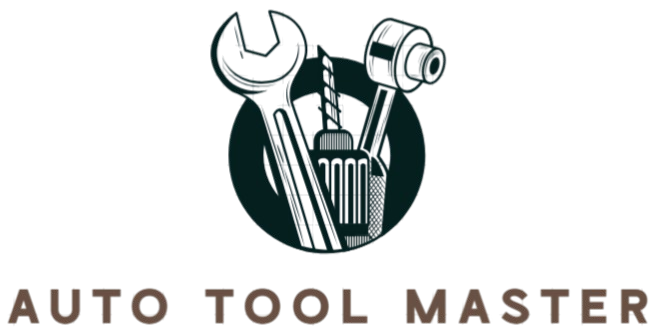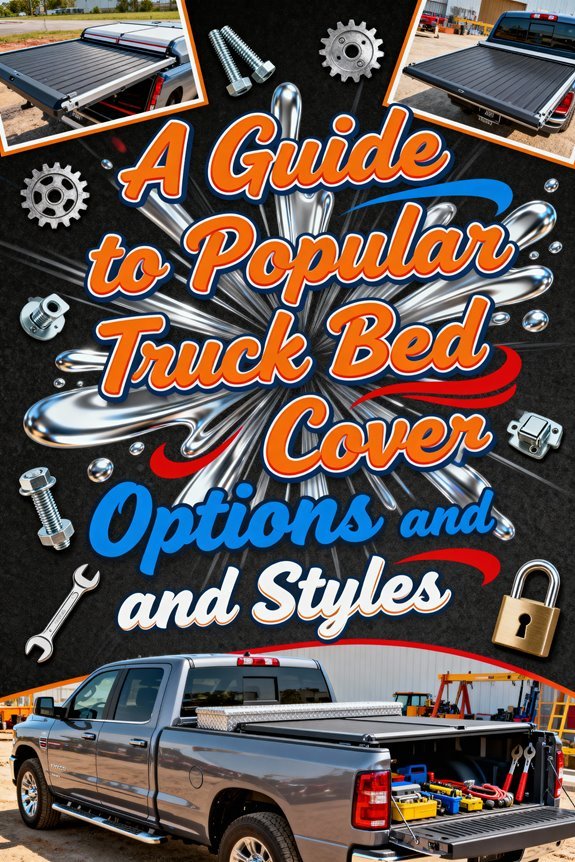To measure your truck bed for a tonneau cover, you’ll need a retractable tape measure of at least 12 feet. Measure the interior length from the bulkhead to the closed tailgate, then record the width from the outside edges of the bed rails. Don’t forget to account for bed liners and accessories that affect usable dimensions. Take multiple measurements at different heights and use the smallest value to ascertain proper fitment. Understanding conversion techniques and manufacturer-specific requirements guarantees you’ll select the right cover configuration.
Essential Tools You’ll Need for Accurate Measurements
Accurate tonneau cover measurement begins with the right tools in hand. You’ll need a retractable tape measure of at least 12 feet with clear inch graduations and a locking mechanism to maintain measured lengths. Preferred measuring tools include durable tape materials that won’t stretch during use, along with paper and pen to record measurements immediately in precise decimals or fractions—never rounded numbers.
Measuring tape features like imperial scales are essential, as most tonneau covers use inch and feet specifications. A helper improves accuracy by stabilizing the tape’s end, while a straight edge ensures horizontal alignment across bed rails. You’ll also benefit from a flashlight for visibility, clamps to maintain tape tension, and digital calipers for measuring intricate bed contours or width variations at multiple points. Many quality covers like those from Gator Tonneau are engineered for easy installation without drilling, making precise measurements even more critical for proper fitment. Proper measurements also help you select the right cover type, as different materials like hard-top tonneaus versus soft roll-up covers have varying installation requirements and durability characteristics. Seeking assistance from others can significantly improve measurement precision, particularly when working with longer truck beds that require coordination between both ends of the tape measure.
How to Measure Truck Bed Length Correctly
With your measurement tools ready, you’ll start by determining your truck bed’s interior length—the foundation for selecting a properly fitting tonneau cover. Close and latch your tailgate completely before beginning. Position your rigid steel tape measure at the inside surface of the bulkhead (front panel near the cab) and extend it straight to the inside edge of the closed tailgate. Record this measurement immediately in the same units specified by your tonneau cover manufacturer—typically inches or feet-and-inches format.
Clear all cargo and bed liners that might obstruct accurate bed dimensions. Take multiple measurements at different heights within the bed, using the smallest value to guarantee proper fit. Don’t rely on manufacturer specifications alone; actual bed dimensions vary due to model years and aftermarket modifications. Minor size discrepancies of a few inches may not significantly impact your cover’s fit, but larger differences require careful consideration. Similar to how a CD ladder strategy provides regular access to funds at intervals, taking measurements at multiple points ensures you have consistent data to verify accuracy. These measurement techniques assure precision when ordering your cover.
Once you’ve confirmed your measurements, consider covers from reputable manufacturers like WeatherTech, which offers options including soft roll-up tonneau covers made of weather-resistant vinyl for added convenience and durability.
How to Measure Truck Bed Width Properly
Truck bed width measurements require two distinct readings to ascertain your tonneau cover interfaces correctly with both the bed rails and interior cargo space. First, you’ll measure the exterior bed rail width by positioning your tape measure from the outside edges of the bed rails near the bulkhead. Record this measurement—typically around 72.75 inches—as your maximum width dimension. Next, measure the interior wheel well rail width from the inside edges of the bed rails. This narrower measurement ascertains accessories won’t interfere with wheel wells. Proper width measurement techniques demand a taut, flush tape measure to prevent sagging and inaccurate readings. Rail variation analysis between truck models makes these precise measurements essential for selecting compatible tonneau covers and accessories. Always ensure your truck is parked on level ground before taking measurements to achieve the most accurate results. When installing your cover, using shims for leveling the rails may be necessary to compensate for any variations in your truck bed’s surface. Understanding your specific vehicle bed size will help you choose between different styles such as soft folding covers, hard folding, or retractable options that fit your measurements precisely.
Why Double-Checking Your Measurements Matters
While initial measurements provide foundational dimensions, validation through double-checking prevents costly fitment errors that compromise your tonneau cover’s functionality. Re-measuring eliminates common measuring mistakes like tape sag, misread increments, and transposed numbers that create gaps or improper sealing. The importance of precision becomes evident when small errors multiply across length, width, and bed rail dimensions—even a quarter-inch discrepancy can prevent proper attachment point alignment.
Compare measurements taken from multiple reference points, such as bed floor versus rail height, to detect irregularities like tapered bed shapes. Document each dimension with photos showing tape placement for verification during ordering. This validation process catches bed-specific features—cargo management systems, bedliners, or mid-year design changes—that affect compatibility. Double-checking reduces returns, prevents water leakage, and validates secure cargo protection through accurate fitment. Accurate measurements ensure proper alignment with truck bed rail slots during installation, allowing clamps to secure the cover evenly for optimal performance. Using proper measuring tools increases accuracy significantly and helps ensure measurements align with manufacturer specifications. Precise dimensions also facilitate easy no-drill installation that many modern tonneau covers offer, preserving your truck bed’s integrity while ensuring secure attachment.
Understanding Your Truck’s Bed Size Options
Manufacturers categorize pickup truck beds into standardized length classifications that directly impact tonneau cover compatibility and selection. You’ll encounter short beds measuring 5-5.5 feet on mid-size truck types and 5.5-6.5 feet on full-size models. Long beds range from 6-8 feet, with heavy-duty variants reaching 8.19 feet. Bed widths typically span 55-65 inches between wheel wells, though certain models like the Ford Super Duty extend to 80 inches. These dimensions vary by manufacturer and bed materials don’t affect sizing standards. Styleside configurations offer different usable space compared to flareside designs due to wheel well intrusion. When selecting tonneau covers, you must account for your specific truck’s bed classification, as covers are engineered to precise dimensional specifications matching factory measurements. Most quality covers feature no-drill clamp systems that secure directly to the bed rails without requiring permanent modifications to your truck. For Ford F-150 owners, understanding these measurements is essential since tonneau covers range from budget-friendly soft cover options starting around $200 to premium retractable models exceeding $1,400. Crew cab configurations typically pair with shorter bed lengths to maintain overall vehicle maneuverability.
Converting Between Inches, Feet, and Metric Units
Accurate measurement conversion prevents costly ordering errors when sourcing tonneau covers from international manufacturers or comparing specifications across different measurement systems. To convert inches to feet, divide by 12 (e.g., 67 in ÷ 12 = 5.58 ft). For metric conversion, multiply inches by 2.54 to get centimeters (67 in × 2.54 = 170.18 cm). When converting feet to meters, multiply by 0.3048 (6.5 ft × 0.3048 = 1.98 m). Always maintain unit conversion consistency throughout your calculations—don’t mix measurement systems mid-process. For area calculations requiring square footage, multiply length by width in inches, then divide by 144. Digital conversion tools enhance measurement accuracy, but you’ll achieve ideal results by understanding the underlying formulas to verify automated calculations before placing your tonneau cover order. Tonneau covers are influenced by slight discrepancies in actual measurements, so double-check your conversions against the manufacturer’s specifications. Whether you’re considering soft roll-up or hard folding options, precise measurements ensure proper fitment and functionality. Similarly, headache rack installations require exact bed measurements to ensure compatibility with your tonneau cover system.
Accounting for Bed Liners and Tailgate Accessories
Before you finalize your tonneau cover measurements, you must account for bed liners and tailgate accessories that alter your truck bed’s effective dimensions and mounting surfaces. Measure over the liner surface rather than bare metal to capture true usable dimensions. Liner thickness greatly impacts rail clearance—spray-on liners add minimal material, while drop-in plastic liners require relief cuts at clamp points. Include liner thickness when measuring bed rail width to guarantee proper clamp fitment. For tailgate accessories, verify tailgate clearance by measuring any extensions beyond standard tailgate edges, such as cargo gates or protective guards. These can interfere with rail installation. Mark clamp locations precisely on drop-in liners before cutting notches. Test-fit repeatedly to maintain watertight seals and confirm compatibility with your manufacturer’s specifications. Installing the bed liner first allows you to plan tonneau mounting points around the liner’s existing configuration for optimal results.
Common Truck Model Variations That Affect Fit
While most tonneau covers specify compatibility by make and model, understanding the specific bed configuration of your truck is critical to ensuring proper fitment. Cab style directly determines bed length—crew cabs typically feature the shortest beds (5.5′), while regular cabs accommodate 8′ beds. Full-size trucks like the F-150 offer three distinct bed lengths, each requiring different covers.
Bed configuration impacts extend beyond length. Stepside or flareside beds feature unique fender designs with external fenders, demanding specially shaped covers incompatible with standard styleside applications. Model year changes can alter dimensions; Tacoma beds vary greatly across generations (1995–2004, 2005–2013, 2013–present). Tonneau covers provide a low-profile design that enhances aerodynamics compared to bulkier alternatives, making proper fitment even more important for optimal fuel economy benefits. If you need to transport items that exceed bed capacity, understanding how to transport a ladder or other long equipment on your vehicle roof becomes essential.
Verify your exact year, cab configuration, and bed style before purchasing. Wheelbase variations affect bed positioning relative to the cab, while trim-specific accessories may influence installation requirements. HD trucks like the Ford F-250 commonly feature 7′ long beds, which require specifically sized tonneau covers designed for extended hauling capacity.
Manufacturer-Specific Measurement Requirements
Once you’ve identified your truck’s configuration, you’ll need to follow the specific measurement protocols established by tonneau cover manufacturers. Measure length from the inside edge of the bulkhead to the inside edge of the closed tailgate. Record measurements in inches for precision, then convert to feet using manufacturer sizing charts—manufacturers often round to standard sizes, which can create measurement discrepancies if you’re not careful. For width, measure the narrowest point inside the bed rails, typically near the bulkhead. Hard and retractable covers demand exact dimensions to prevent installation challenges related to sealing and mounting mechanisms. Roll-up covers offer more flexibility, while folding designs require precise rail fit for proper operation. Understanding how tonneau covers lock into place with clamps or rails installed along your truck’s bed frame will help you identify the critical measurement points during this process. Always compare your measurements against manufacturer specifications before purchasing to avoid ordering incorrect sizes. Remember that tonneau covers are designed for specific truck models, so a cover intended for one make will generally not fit another without modification. If your measurement falls within an inch or two of the listed tonneau size, the cover should fit properly on your truck bed.

